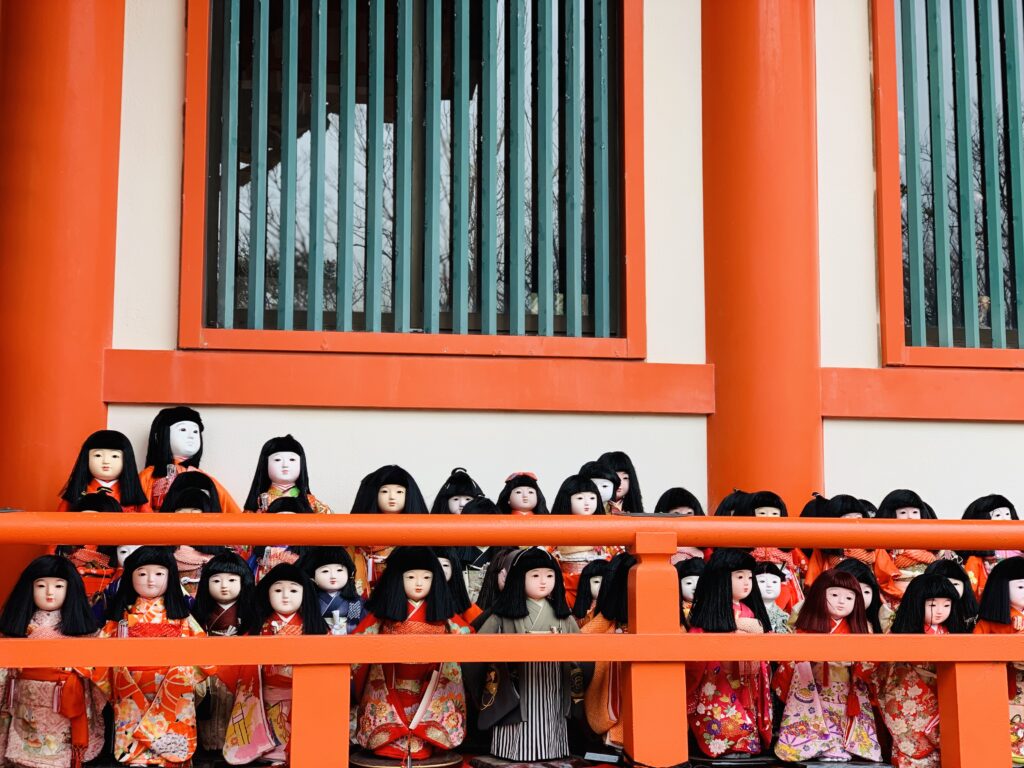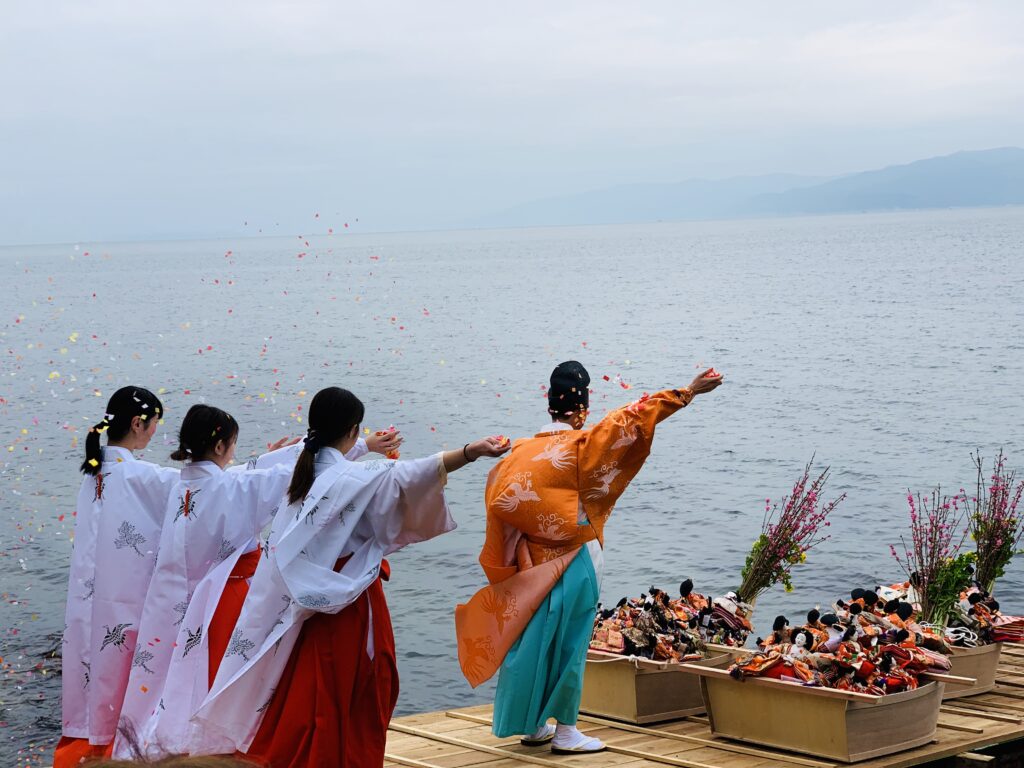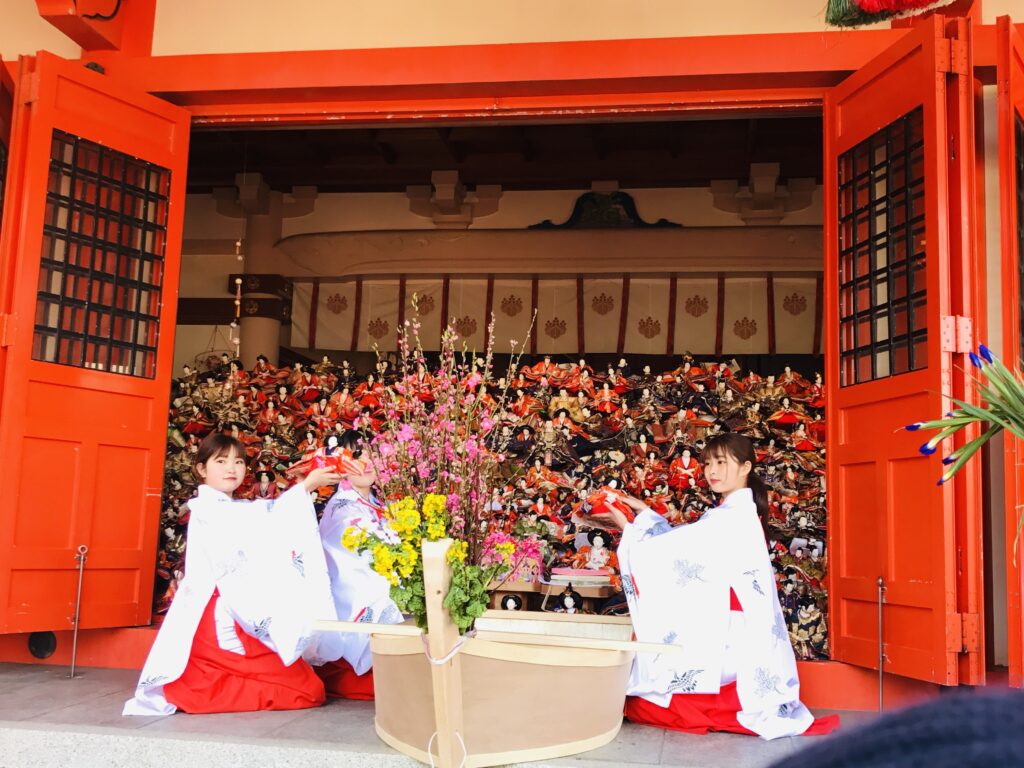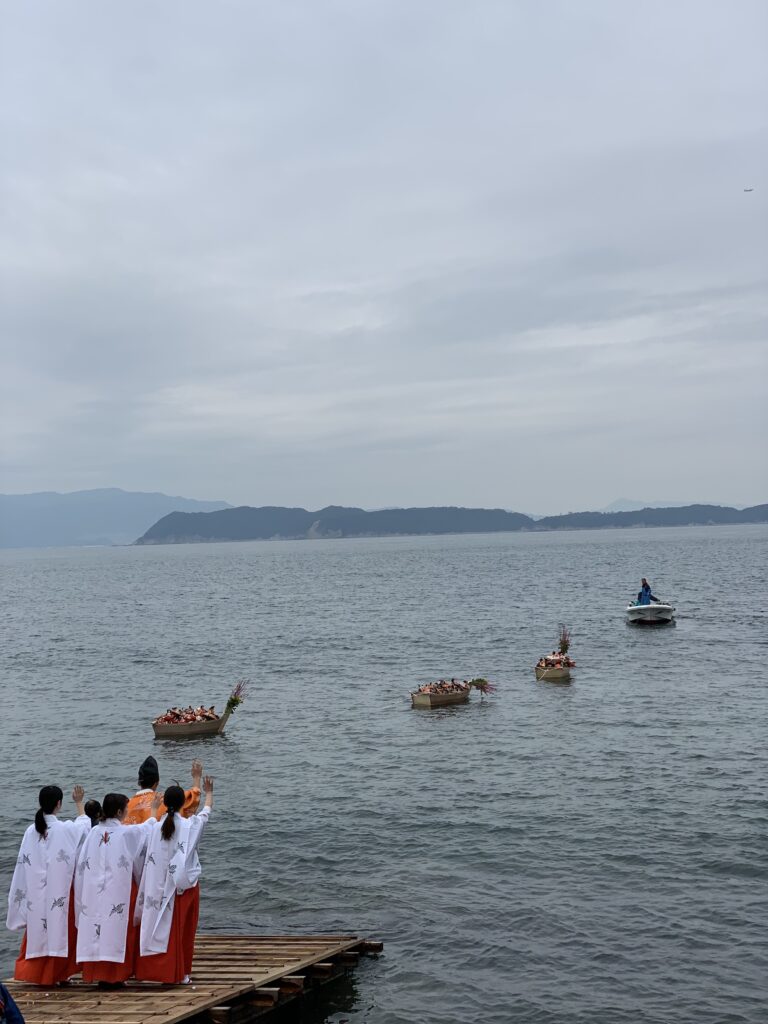Farewell to the Dolls
In modern times, the hina nagashi (“the casting of dolls into water”) is performed at various shrines and temples across the country, one of the most famous ceremonies being held at Awashima Shrine, in Wakayama Prefecture. The shrine is known because the deities Sukunahikona-no-mikoto, the God of Medicine, and Okinagatarashi-hime-no-mikoto are supposed to cure female ailments and infertility. The goddess Okinagatarashi-hime-no-mikoto, who was the consort of Sumiyoshi Myōjin, became afflicted with a female disease and was exiled to Awashima, where she vowed to cure all women who came to pray there. Awashima Shrine is the place where hina dolls from all over the country are collected before March 3rd, when they are put in three wooden boats and let drift into the sea.
The ceremony begins at noon, when the priest performs the ritual purification, after which the three boats containing the dolls are carried to the shore by women only. Any female participant in the festival is welcome to join in carrying the boat for a certain length of time, as long as they respect the silence taboo – while shouldering the boats, speaking is strictly forbidden. An explanation of this taboo may be the fact that the dolls are not mere old toys to be discarded, but they also represent sacrificial victims who acquire a divine status. In all cultures, the sacrificial victim becomes a messenger to the gods, closer to the sacred than any other participant in the ritual, and thus a character to be revered and worshipped. Once the boats reach the shore, another short purification ritual is performed and then the dolls are cast into the sea.
In the old times, apparently children were supposed to weep while bidding their farewell to the dolls, thus emphasizing once more their divine status, but nowadays the weeping has been replaced with a song performed by girls from the local kindergarten. The ritual significance of this ceremony becomes evident if we consider the fact that not only the floating dolls, but also the dolls from the house displays are viewed as a link with the sacred world; they are often seen as yorishiro— the temporary abode of the gods who descend to bless the house and the girls within.
The Hina Matsuri itself represents a unique celebration of fertility, that which is budding both in the recently awakened nature and in the little girls, symbolized by the peach blossoms; it is an occasion to renew the bonds with the natural world and to have yet another glimpse into the sacred, through the ephemeral gate opened by the floating dolls.




